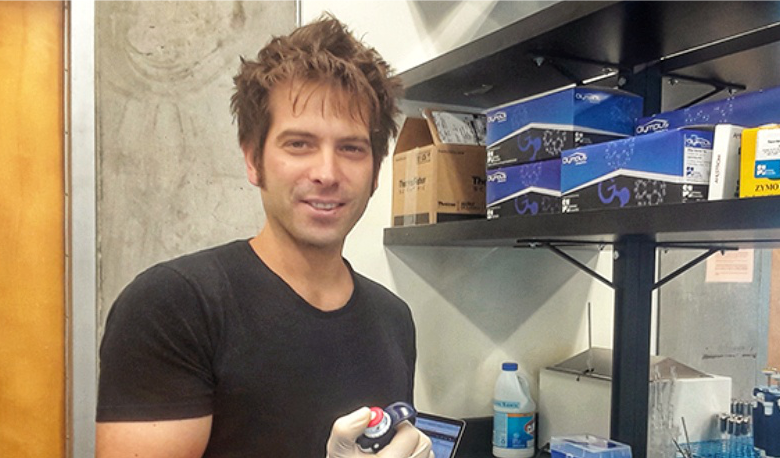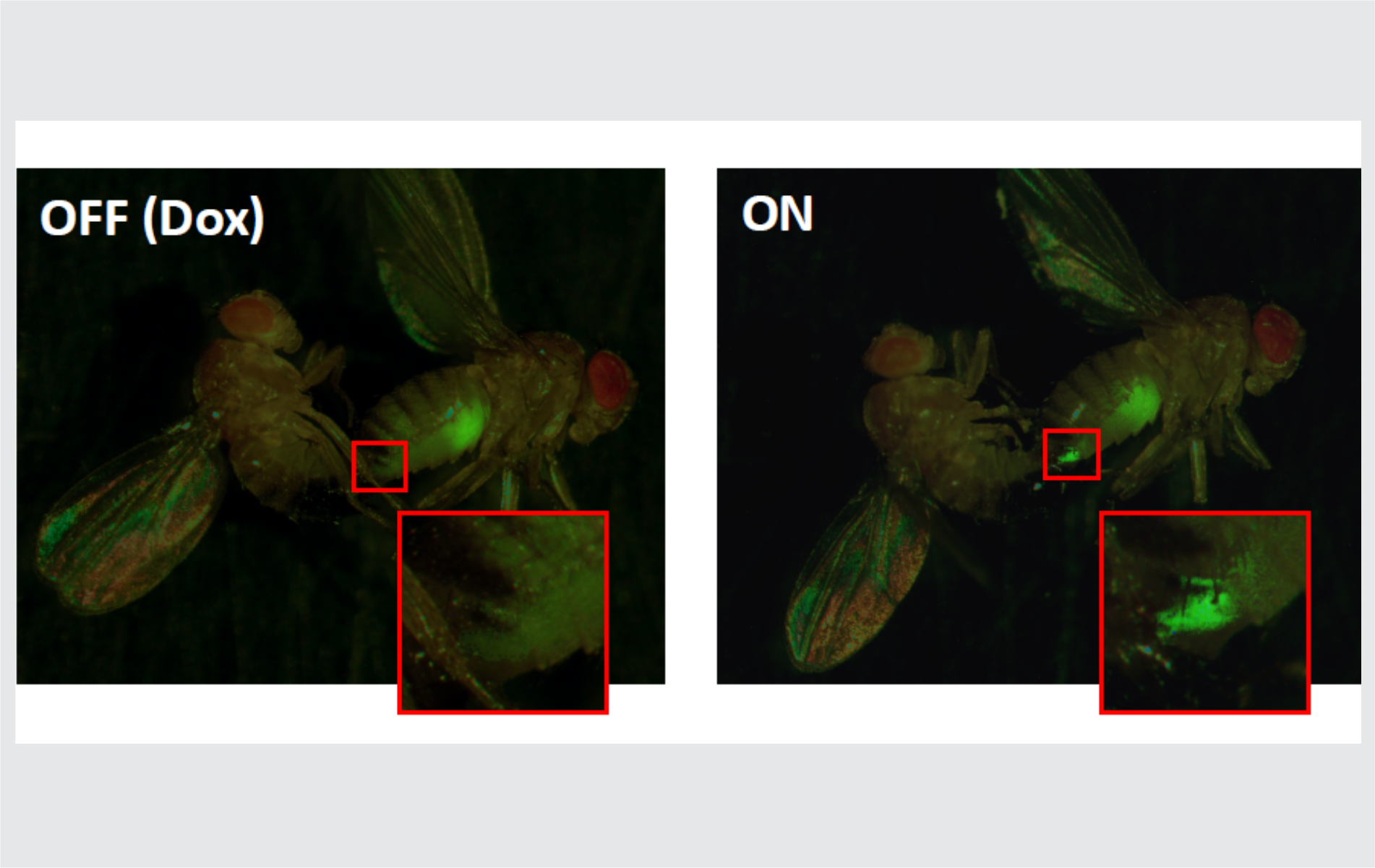
Evolution and development of insect reproductive traits
Dr. Juan Hurtado
PROJECT LEADER / DIRECTOR DE PROYECTO
Jefe de Trabajos Prácticos EGE-FCEN, UBA
Investigador Adjunto CONICET
I am an evolutionary geneticist using Drosophila flies as a model to research the evolution of reproductive traits such as seminal proteins. I am also a wildlife lover interested in nature conservation. My biggest professional ambition is to transfer the findings on insect reproductive biology into the development of environmentally-friendly tools for insect pest management. I particularly sought to generate species-specific and non-contaminant insecticides by genetically engineering reproductive proteins.
Research Projects / Líneas de Investigación
Genetic engineering of seminal proteins, aimed at designing ejaculates toxic to females, remains an unexplored research area and may provide an innovative approach for controlling arthropod pests. As a proof of concept, we propose using the fruit fly Drosophila melanogaster to evaluate the insecticidal potential of several engineered toxic seminal proteins. Recently, we established a binary expression system in this species to control the expression of exogenous seminal proteins. Therefore, we propose to design several toxic, artificial seminal proteins and use this binary expression system to evaluate the insecticidal potential of our engineered toxins. In this way, we plan to identify promising candidates that we can subsequently use as seminal bioinsecticides against insect pests.
Unlike other spiders, jumping spiders do not build webs to hunt, therefore, they rely heavily on their venoms to paralyze their prey. Despite this, the composition of these venoms has never been studied in depth. This project aims to explore the venoms of jumping spiders from the Misiones rainforest with the goal of identifying neurotoxic proteins and contributing to the development of new environmentally friendly bioinsecticides.
Under construction
- Belliard S.A., Bachmann G.E., Fernández P.C., Hurtado J., Vera M.T. & Segura D.F.
Identification of host plant volatile stimulants of Anastrepha fraterculus male courtship behavior.
Frontiers in Ecology and Evolution. 10:943260 1–6. https://doi.org/10.3389/fevo.2022.943260.
- Hurtado J., Almeida F., Belliard S., Revale S. & Hasson E.
On how to identify a seminal fluid protein: a response to Wigby et al.
Insect Molecular Biology 1–6. https://doi.org/10.1111/imb.12806.
(see the not peer-reviewed Preprint)
- Rondón J.J., Pisarenco V.A., Rozas J., Moreyra N.N., Hurtado J.* & Hasson E.*
*: Shared co-last authorship.
Evolution of the Odorant-Binding Protein gene family in Drosophila.
Frontiers in Ecology and Evolution. 10:957247. https://doi.org/10.3389/fevo.2022.957247.
- Hurtado J., Revale S. & Matzkin L.M.
Propagation of seminal toxins through binary expression gene drives can suppress polyandrous populations.
Scientific Reports 12, 6332 (2022). https://doi.org/10.1038/s41598-022-10327-4.
- Hurtado J., Almeida F.C., Belliard S.A., Revale S. & Hasson E.
Research gaps and new insights in the evolution of Drosophila seminal fluid proteins.
Insect Molecular Biology. 10.1111/imb.12746. https://doi.org/10.1111/imb.12746.
- Devescovi F., Hurtado J. & Taylor P.W.
Mating-induced changes in responses of female Queensland fruit fly to male pheromones and fruit: A mechanism for mating-induced sexual inhibition.
Journal of Insect Physiology. https://doi.org/10.1016/j.jinsphys.2021.104195
- Bennardo L., Kreiman L., Gandini L., Rondón J., Turdera L., Hurtado J., Hasson E.
First record of the Spotted-wing Drosophila (Diptera: Drosophilidae) in Martín García Island Wildlife Refuge in Argentina.
Revista de la Sociedad Entomológica Argentina. 80(3): 53-57.
- Moreyra N.N., Mensch J., Hurtado J., Almeida F., Laprida C. & Hasson E.
What does mitogenomics tell us about the evolutionary history of the Drosophila buzzatii cluster (repleta group)?
PLoS ONE. https://doi.org/10.1371/journal.pone.0220676.
- Hurtado J., Almeida F., Revale S. & Hasson E.
Revised phylogenetic relationships within the Drosophila buzzatii species cluster (Diptera: Drosophilidae: Drosophila repleta group) using genomic data.
Arthropod Systematics and Phylogeny. https://doi.org/10.26049/ASP77-2-2019-03.
- Fernandez Goya L.*, Hurtado J.* & Hasson E.
Female remating rate and pattern of sperm use suggest intense sperm competition in Drosophila antonietae (Diptera: Drosophilidae). *: Shared co-first authorship.
Evolutionary Ecology. https://doi.org/10.1007/s10682-019-10003-6.
- Hasson E., De Panis D., Hurtado J. & Mensch J.
Host plant adaptation in cactophilic species of the Drosophila buzzatii cluster: fitness and transcriptomics.
Journal of Heredity. https://doi.org/10.1093/jhered/esy043.
- Iglesias P.P., Soto I.M., Soto E.M., Calderón L., Hurtado J. & Hasson E.
Rapid divergence of courtship song in the face of neutral genetic homogeneity in the cactophilic fly Drosophila buzzatii.
Biological Journal of the Linnean Society. https://doi.org/10.1093/biolinnean/bly108.
- Jaime M.D.L.A., Hurtado J., Loustalot-Laclette M.R., Oliver B. & Markow T.
Exploring effects of sex and diet of Drosophila melanogaster head gene expression.
Journal of Genomics. https://dx.doi.org/10.7150/jgen.22393.
- Mensch J., Hurtado J., Zermoglio P.F., de la Vega G., Rolandi C., Schilman P.E., Markow T.A. & Hasson E.
Enhanced fertility and chill tolerance after cold-induced reproductive arrest in females of temperate species of the Drosophila buzzatii complex.
Journal of Experimental Biology. https://doi.org/10.1242/jeb.150540.
- Soto E.M., Betti M., Hurtado J. & Hasson E.
Differential responses to artificial selection on oviposition site preferences in Drosophila melanogaster and D. simulans. Insect Science. http://dx.doi.org/10.1111/1744-7917.12176.
- Hurtado J., Iglesias P., Lipko P. & Hasson E.
Multiple paternity and sperm competition in the sibling species Drosophila buzzatii and D. koepferae.
Molecular Ecology. https://doi.org/10.1111/mec.12436.
- Hurtado J. & Hasson E.
Inter and intraspecific variation in female remating propensity in the cactophilic sibling species Drosophila buzzatii and D. koepferae.
Journal of insect physiology. https://doi.org/10.1016/j.jinsphys.2013.03.007.
- Hasson E., Soto I., Soto E. & Hurtado J.
Adaptación y especiación en Drosophila.In Darwin en el Sur, ayer y hoy. (eds. E. Hasson, N. Lavagnino, P. Lipko, A. Massarini, J. Mensch, V. Scheinsohn, A. Tropea).
Libros del Rojas. Buenos Aires.
- Hurtado J., Soto E.M., Orellana L. & Hasson E.
Mating success depends on rearing substrate in cactophilic Drosophila.
Evolutionary Ecology. http://dx.doi.org/10.1007/s10682-011-9529-z.
- Soto E.M., Goenaga J., Hurtado J. & Hasson E.
Oviposition and performance in natural hosts in cactophilic Drosophila.
Evolutionary Ecology. https://doi.org/10.1007/s10682-011-9531-5.
- Soto I.M., Soto E.M., Carreira V.P., Fanara J.J., Hurtado J. & Hasson E.
Geographic patterns of inversion polymorphism in the second chromosome of cactophilic Drosophila buzzatii from northeastern Argentina.
Journal of Insect Science. https://doi.org/10.1673/031.010.14141.
2023 – 2025. Subsidio UBACYT. Mod II – Universidad de Buenos Aires. Ingeniería genética de proteínas seminales: una estrategia innovadora para el control de insectos. Rol: Investigador Responsable.
2024. Fulbright-CONICET grant/scholarship: Visiting scholar program – Fulbright. Genetic engineering of seminal proteins as an innovative approach for insect population control. Rol: Investigador Responsable.
2022 – 2024. Subsidio PICT-2021-GRF-TI-00182: Programa de subsidios para grupos de reciente formación – AGENCIA I+D+i. Ingeniería genética de proteínas seminales como estrategia innovadora para el control de insectos. Rol: Investigador Responsable.
2022 – 2024. Subsidio PIBAA 2022: Programa de subsidios para investigadores asistentes/adjuntos – CONICET. Ingeniería genética de proteínas seminales como herramienta innovadora para el control poblacional de insectos. Rol: Investigador Responsable.
2021 – 2024. Subsidio PICT 2019-00062: Programa raíces – AGENCIA I+D+i. Arquitectura genética del ovipositor aserrado de la plaga de frutales Drosophila suzukii. Rol: Miembro de Grupo Responsable.
2018 – 2020. Subsidio PICT 4113/2016: Programa para investigadores jóvenes – AGENCIA I+D+i. Evolución del fenotipo a partir de genes nuevos, ¿cómo afecta el mecanismo de origen génico a la tasa de evolución adaptativa en Drosophila? Rol: Investigador Responsable.
- Subsidio CONICET: Programa de financiamiento parcial para estadías breves en el extranjero – CONICET. Using δ-endotoxins to generate transgenic toxic ejaculates as a novel control strategy against target insect females. Rol: Investigador Responsable.
-
noticias frankel
28/10/2019 Noticias / Medios - Frankel
Integrantes del grupo

Paula Petek
Undergraduate student

Paula Petek
Undergraduate student
- Phone:+549 (11) 3322-8633
- Email:hurtado.juanp@gmail.com



